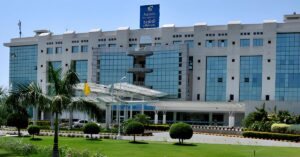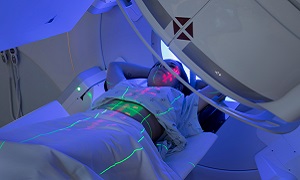Best Doctors in India for Squamous Cell Carcinoma Treatment
Best Hospitals in India for Squamous Cell Carcinoma Treatment
- City: Mumbai, India
Hospital Highlights:
- Fortis Hiranandani hospital was established in 2007.
- The hospital is an advanced tertiary care, multi-specialty hospital equipped with 149 beds.
- The hospital is equipped with a super ICU to provide emergency medical care to critically ill patients.
- The hospital is NABH accredited.
- The critical care facility in the hospital is augmented with the state-of-the-art facilities that facilitate speedier diagnosis and efficient monitoring.
- The hospital provides specialty medical services in cardiology, orthopedic science, pediatric science, neurology, diabetic care, urology, nephrology, ENT, obstetrics, gynecology, cosmetic surgery, bariatric surgery, neuro and spine care.
- City: Gurugram, India
Hospital Highlights:
- W Pratiksha Hospital, Gurugram, is one of the best hospitals in the NCR region. It is also a top hospital in India for IVF. Since its inception, the hospital has performed over 5500 successful IVFs. The hospital also specializes in gynecology.
- With over 20 years of experience in providing quality healthcare, the hospital is known as one of the most trusted and valued health providers in India.
- Equipped with world-class medical facilities and advanced technology, the hospital’s doctors and clinicians also have a track record of delivering excellent results. The hospital is also known for focusing on preventive well-being as much as on curative treatment.
- The hospital has earned the trust of its patients, by providing the best available treatments at affordable costs.
- City: Gurugram, India
Hospital Highlights:
- Paras hospital was established in 2006 and is the 250 bedded flagship hospital of Paras Healthcare.
- The is supported by a team of doctors of international and national repute.
- The hospital is NABH accredited and also the first hospital in the region to have a NABL accredited laboratory.
- The hospital provides specialty medical services in around 55 departments including Neurosciences, Joint Replacement, Mother & Child Care, Minimal Invasive Surgery, Gynecology and Obstetrics, Ophthalmology, Dermatology, Endocrinology, Rheumatology, Cosmetic and Plastic surgery.
- The hospital is equipped with state-of-the-art technologies.
- City: Kolkata, India
Hospital Highlights:
- Fortis Hospital, Anandapur, Kolkata is a world-class super-speciality equipped with the latest technologies in the medical world.
- The hospital is NABH accredited.
- This state-of-the-art facility specializes in cardiology and cardiac surgery, urology, nephrology, neurosciences, orthopaedics, digestive care, emergency care and critical care.
- The hospital, governed by integrated Building Management System (IBMS), has a pneumatic chute system, for quick vertical and horizontal transportation between floors, facilitating speedy transfer of patient specimens, documents, reports, and medicines to the concerned departments.
- The hospital also has a nephrology department with over 28 advanced dialysis units.
- City: Mumbai, India
Hospital Highlights:
- SL Raheja hospital is a 140-bed multi-specialty tertiary care hospital that is being managed by Fortis Healthcare Ltd.
- The hospital is a benchmark in healthcare and medical facilities in the neighborhood of Mahim & the western suburbs.
- L.Raheja Hospital, Mahim has one of the most effective ICU and Casualty care services.
- The hospital provides specialty medical services in Cardiology, Oncology, Neurology, Orthopedics, Mother & Child Care, and in Diabetes.
- City: Mumbai, India
Hospital Highlights:
- Wockhardt Hospitals were established in the year 1973, originally called First Hospitals and Heart Institute.
- Wockhardt Hospitals are super specialty health care networks in India, nurtured by Wockhardt Ltd, India’s 5th largest Pharmaceutical and Healthcare company.
- Wockhardt Hospitals is associated with Partners Harvard Medical International, an international arm of Harvard Medical School, USA.
- Wockhardt Heart Hospital performed India’s first endoscopic heart surgery.
- The hospital has a state-of-the-art infrastructure equipped with the latest technologies and modern equipment.
- It has special Centers of Excellence dedicated to the major specialties to provide hassle-free and high-quality clinical care.
- City: Gurugram, India
Hospital Highlights:
- The CK Birla Hospital in Gurugram is a NABH-accredited multi-specialty hospital.
- The hospital strives to increase the quality of healthcare by focusing on UK NHS nurse and midwife training requirements. Policies and practices derived from the National Institute for Health and Treatment Excellence (NICE) recommendations in the United Kingdom ensuring that a strong focus on safety, high-quality clinical care, and sanitation is maintained.
- The hospital’s cutting-edge technology and facilities allow for real-time communication and seamless collaboration among caregivers, ensuring accuracy and the best possible results. Those with foreign experience and accreditations make up part of the hospital’s team of clinicians.
- City: Ahmedabad
Hospital Highlights:
- As a member of the Apollo Hospitals Group, Apollo Hospitals International Limited, Ahmedabad is one of the most popular and sought-after medical facilities in Gujarat.
- Through its 6 Centres of Excellence and various affiliated branches, which cover all specialties and subspecialties, the hospital provides the most advanced clinical services.
- Since its inception in 2003, the hospital has been providing each patient with the most up-to-date medical equipment and state-of-the-art technology.
- With more than 150 successful organ transplants, including liver and renal transplants, the facility has been able to build a strong and extensive organ transplant program.
- In addition to performing 600 surgeries and caring for over 1800 patients on an IP basis, the hospital sees more than 18,000 patients on average in the outpatient department.
- With one of the biggest cardiology teams in the area, the hospital provides state-of-the-art regional care treatment in Cardiac Sciences.
- Additionally, the hospital offers a broad range of Neuro Interventional techniques to help stroke patients recover more quickly.
- City: Noida, India
Hospital Highlights:
- Jaypee Hospital is the flagship hospital of the Jaypee Group.
- This hospital has commissioned 525 beds in the first phase and has been planned and designed as a 1200 bedded multi-specialty facility.
- It holds the accreditation of the NABH and NABL.
- The hospital has state-of-the-art infrastructure equipped with the latest technologies and modern equipment like 64 Slice PET CT, Dual Head 6 Slice SPECT CT, Gamma Camera, and Da Vinci Robotic Surgery for comprehensive robotic surgical solutions.
- It has special Centers dedicated to the major specialties to provide hassle-free and high-quality clinical care.
- City: Mumbai, India
Hospital Highlights:
- Reliance Hospital is one of the best super-specialty care hospitals in Navi Mumbai.
- The main purpose of this hospital is to become a trustworthy place for the best health and hope for society. The hospital is well connected to the suburbs of Mumbai and Navi Mumbai.
- The hospital has various specialty departments, viz., Accident & Emergency, Anesthesiology, Dental Services, Dermatology, Diabetology, Dietetics Nutrition, Endocrinology, ENT, Gastroenterology, General Surgery, Gynaecology And Obstetrics, Hepato Pancreato Biliary Surgery, Infectious Disease, Internal Medicine, Interventional Radiology, Laboratory Medicine, Minimal Access Laparoscopic Surgery, Nephrology, Neurosciences, Opthalmology, Orthopaedics, Paediatrics, Pain Management Palliative Care, Physical Medicine Rehabilitation, Plastic And Reconstructive Surgery, Psychiatry, Pulmonary Medicine, Radiology, Rheumatology, Transplant, Urology Andrology, Vascular Surgery
Squamous Cell Carcinoma
Squamous Cell Carcinoma is a common form of skin cancer, which is found in areas of the body that have been damaged by the sun’s UV rays or tanning beds. The exposed skin can include skin in the head, neck, chest, upper back, lips, ears, legs and hands.
Unlike other types of skin cancer, Squamous Cell Carcinoma (SCC) is a slow-growing skin cancer. It can however spread to tissues, bones as well as the lymph node, where it can become quite difficult to treat. Although usually not life-threatening, it can be quite aggressive. It can however be easy to treat if it is caught early. If it is left untreated, Squamous Cell Carcinoma of the skin might grow large and spread to various parts of the body, which can lead to various complications.
Symptoms
Squamous cell carcinoma of the skin usually occurs on sun-exposed skin, such as the scalp, the backs of your hands, your lips or your ears. However, it might also occur anywhere on the body, including inside your mouth or the bottoms of your feet. It may even occur in your genitals.
It can have several signs and symptoms which include:
- A firm and red nodule
- A new sore or raised area on an old scar or an ulcer
- A flat sore with a scaly crust
- A red and raised patch or wart-like sort on or in the anus located on your genitals.
Causes and risk factors
Mutations that occur in skin cell DNA leads to skin cancer. These changes can cause abnormal cells to multiply out of control. When this occurs in the squamous cells, the condition is termed as SCC.
UV radiation is the most common known cause of DNA mutations, leading to skin cancer. UV radiation can come from sunlight or tanning lamps and beds.
Though frequent expose to UV radiation increases the risk of skin cancer, the condition can also develop in people who are not spending much time in the sun or tanning beds. Such people might be genetically predisposed to skin cancer or they might be having a weaker immunity, which increases their likelihood of getting skin cancer. Patients who are receiving radiation treatments for other skin conditions can also be at risk of skin cancer.
Having fair skin, light-colored hair and blue, green or gray eyes is a risk factor for SCC. Having long-term exposure to UV rays is the most common risk factor. Few other risk factors include living in sunny regions or at a high altitude, having a history of being exposed to chemicals, having a history of multiple severe sunburns.
Diagnosis
Tests and procedures which are used for diagnosis of squamous cell carcinoma of the skin can include:
Physical exam
Removing a sample of tissue for testing
For confirming squamous cell carcinoma of the skin diagnosis, your doctor will be using a tool to cut away some or the entire suspicious skin lesion also called a biopsy. The type of skin biopsy which you undergo depends on your particular situation. The tissue is sent to a laboratory for examination.
Treatment
Treatment is based on multiple factors, such as the extent as well as the severity of your cancer, your age, your overall health, the location of cancer.
There are many treatments that can be performed as in-office procedures. These include:
Mohs’ micrographic surgery
In Mohs’ micrographic surgery, your doctor removes the abnormal skin using a scalpel, along with some of the surrounding tissue. This sample is then immediately examined using a microscope. If cancer cells are found in the sample, this process is repeated until no cancer cells are found.
Electrosurgery
Electrosurgery, which is also known as curettage and electrodesiccation, involves scraping off cancer as well as burning the skin for killing cancer cells. Typically this process is done more than once for ensuring thorough treatment as well as complete removal of cancer.
Excisional surgery
Excisional surgery, during which your doctor removes your cancer cells as well as a thin layer of healthy skin, in the surrounding area. Stitches are used for closing the wound. After this, the sample is sent to a laboratory to ensure the entire cancerous area has been removed.
Radiation
Some doctors might also use photodynamic therapy, or laser surgery and topical medications for treating SCC. However, the US Food and Drug Administration have not approved such methods for treating it.
Once SCC has been treated, it is important that you attend the follow-up visits with your doctor. SCC can return and therefore, it is important that you monitor your skin for any precancerous or cancerous areas at least once a month.
Prevention
To reduce the risk for SCC, one can follow these tips:
- Limiting exposure to the sun, especially during 10 am and 4 pm
- Wear sunscreen while going out in the sun
- Wear sunglasses that provide UV ray protection
- Wearing a hat and covering the skin while working outside
- Check the skin every month for any abnormal growths
- Protecting the skin during winter as winter rays can be especially dangerous
- Avoid tanning beds and lamps
- Consult a dermatologist once a year, for a full-body skin check













